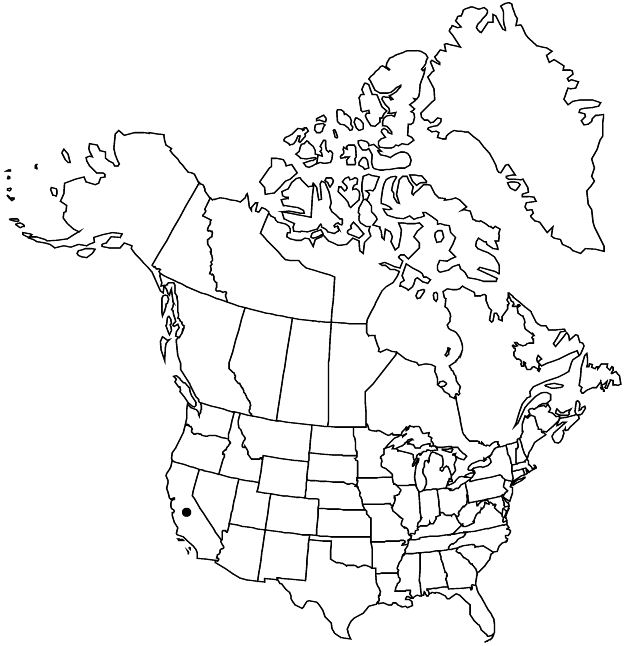Difference between revisions of "Crocanthemum scoparium"
Publ. Field Mus. Nat. Hist., Bot. Ser. 5: 175. 1923.
FNA>Volume Importer |
FNA>Volume Importer |
||
| Line 29: | Line 29: | ||
|distribution=Calif.;nw Mexico. | |distribution=Calif.;nw Mexico. | ||
|discussion=<p>Varieties 2 (2 in the flora).</p><!-- | |discussion=<p>Varieties 2 (2 in the flora).</p><!-- | ||
| − | --><p>Even with the recognition of Crocanthemum aldersonii and C. suffrutescens as separate species, morphological diversity within C. scoparium still remains considerable. The two varieties here recognized show differences in habit, average plant height, number of flowers, and distribution. Another variant occurs sporadically along the coast and on Santa Cruz Island, from Monterey to San Diego counties; vegetative parts (at least distal branches, pedicels, and sepals) are covered with white, lanate hairs. This variant has never been formally named. Another form from coastal Mendocino County was called “Helianthemum mendocinensis” by Alice Eastwood on a specimen (H. E. Brown 785, JEPS); the name was never published. These plants have densely stellate-pubescent stems and exceptionally elongate sepal tips.</p> | + | --><p>Even with the recognition of <i>Crocanthemum aldersonii</i> and <i>C. suffrutescens</i> as separate species, morphological diversity within <i>C. scoparium</i> still remains considerable. The two varieties here recognized show differences in habit, average plant height, number of flowers, and distribution. Another variant occurs sporadically along the coast and on Santa Cruz Island, from Monterey to San Diego counties; vegetative parts (at least distal branches, pedicels, and sepals) are covered with white, lanate hairs. This variant has never been formally named. Another form from coastal Mendocino County was called “Helianthemum mendocinensis” by Alice Eastwood on a specimen (H. E. Brown 785, JEPS); the name was never published. These plants have densely stellate-pubescent stems and exceptionally elongate sepal tips.</p> |
|tables= | |tables= | ||
|references= | |references= | ||
| Line 64: | Line 64: | ||
|publication year=1923 | |publication year=1923 | ||
|special status=Selected by author to be illustrated | |special status=Selected by author to be illustrated | ||
| − | |source xml=https://jpend@bitbucket.org/aafc-mbb/fna-data-curation.git/src/ | + | |source xml=https://jpend@bitbucket.org/aafc-mbb/fna-data-curation.git/src/8f726806613d60c220dc4493de13607dd3150896/coarse_grained_fna_xml/V6/V6_771.xml |
|genus=Crocanthemum | |genus=Crocanthemum | ||
|species=Crocanthemum scoparium | |species=Crocanthemum scoparium | ||
Revision as of 17:50, 18 September 2019
Subshrubs. Stems spreading to erect-fastigiate, 10–45 cm, usually sparsely stellate-pubescent to glabrate, sometimes densely lanate. Leaves cauline, tending to be deciduous in summer; petiole 0–2 mm; blade linear, 5–11 × 0.5–2(–3.5) mm, surfaces stellate-pubescent to glabrate abaxially, sparsely stellate-pubescent to glabrate adaxially, lateral veins obscure abaxially. Inflorescences terminal, panicles or racemes; chasmogamous flowers 1–18 per panicle or raceme, cleistogamous 0. Pedicels 2–6 mm, sparsely or not glandular-hairy; bracts 2–4 × 0.3–0.5 mm. Chasmogamous flowers: outer sepals linear, 1.5–3.5 × 0.3 mm, inner sepals 3.5–5(–7.5) × 2–3 mm, apex acute to acuminate; calyx stellate-pubescent, hairs to 1 mm; petals obovate, 3–6 × 3–5 mm; capsules 2.8–3.8 × 2–2.5 mm, glabrous.
Distribution

Calif., nw Mexico.
Discussion
Varieties 2 (2 in the flora).
Even with the recognition of Crocanthemum aldersonii and C. suffrutescens as separate species, morphological diversity within C. scoparium still remains considerable. The two varieties here recognized show differences in habit, average plant height, number of flowers, and distribution. Another variant occurs sporadically along the coast and on Santa Cruz Island, from Monterey to San Diego counties; vegetative parts (at least distal branches, pedicels, and sepals) are covered with white, lanate hairs. This variant has never been formally named. Another form from coastal Mendocino County was called “Helianthemum mendocinensis” by Alice Eastwood on a specimen (H. E. Brown 785, JEPS); the name was never published. These plants have densely stellate-pubescent stems and exceptionally elongate sepal tips.
Selected References
None.
Key
| 1 | Stems mostly 10–30 cm, divaricate and spreading or curved proximally and erect distally; mostly near-coastal. | Crocanthemum scoparium var. scoparium |
| 1 | Stems usually 30–45 cm, usually erect-fastigiate, sometimes curved proximally and erect distally; mostly inland. | Crocanthemum scoparium var. vulgare |